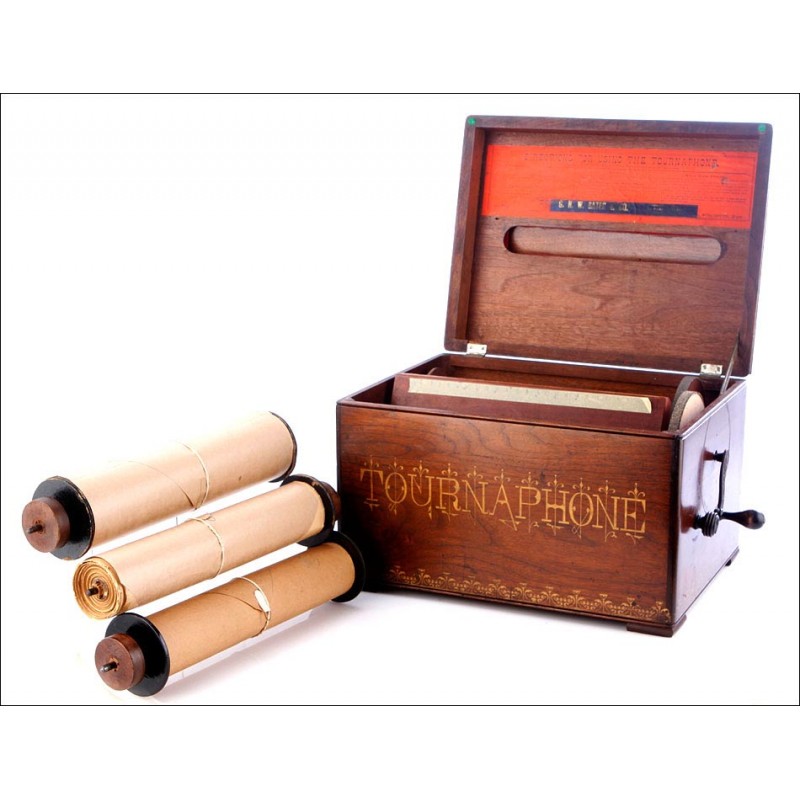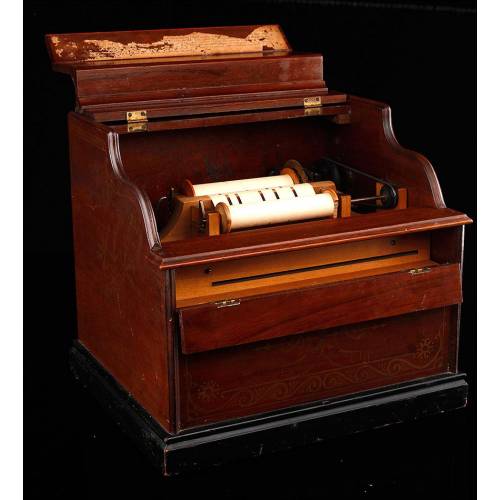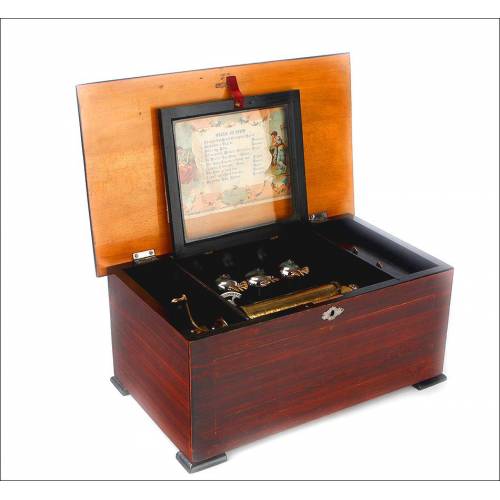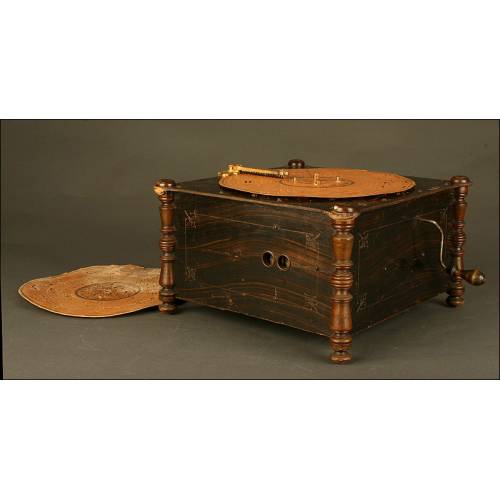C-068
Antique Tournaphone Organ, USA, 1880's
Fantastic Antique Tournaphone Organillo from the late 19th century. With 3 music rolls and 25 notes.
Sold!
Superb antique Tournaphone desk organette or roller organ, made in the United States in the late 19th century (1880). The organette stands out for its amazing condition and wonderful working order. The solid wooden box has been fully restored so today the wood reveals itself in all its glory. The golden decoration with the TOURNAPHONE brand name in big capital lettering is greatly preserved and looks really impressive. The organette mounts a 25-note movement and comes with three music rolls, each one containing 5 tunes. Together with the Cabinetto model, the Tournaphone mounts the largest music roll of all table models ever made. The big reed block provides a deep mellow resonance that cannot be found in smaller organs. The box is made of American walnut wood, decorated with beautiful art-deco style motives. Attached to the inner side of the cover we can see a red label with directions for using the organette and the manufacturing companys name, G.H.W. Bates & Co. The paper rolls that come with the organette have also been restored. Every lover of old-time musical instruments will find a singular piece in this antique Tournaphone organette, as well as a great decorative item. Measurements: Width: 17.3 in / 44 cm. Height: 11.4 in / 29 cm.Organette History The organette o roller organ is a mechanical hand-cranked free reed instrument whose origin dates back to the 1870s. Among the first companies that manufactured and commercialized these devices were: John McTammany (Massachusetts), Autophone Company (Nueva York), Automatic Organ Co. (Boston), J. M. Draper (London), Paul Ehrlich & Co (Germany ) and other manufacturers worldwide. The first patents belonged to Henry Bishop Horton, John McTammany and Paul Erhlich. Organettes use rolls of perforated paper or cardboard, perforated metal disks and wooden rollers on which the musical tunes are recorded. Musical scales range from 14 to 39 notes depending on the instruments complexity. Organettes became immensely popular between the 1890s and the 1920s, but their popularity declined with the advent of phonographs and gramophones.
























































